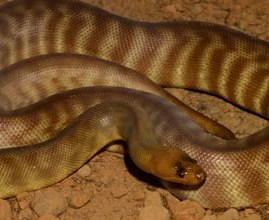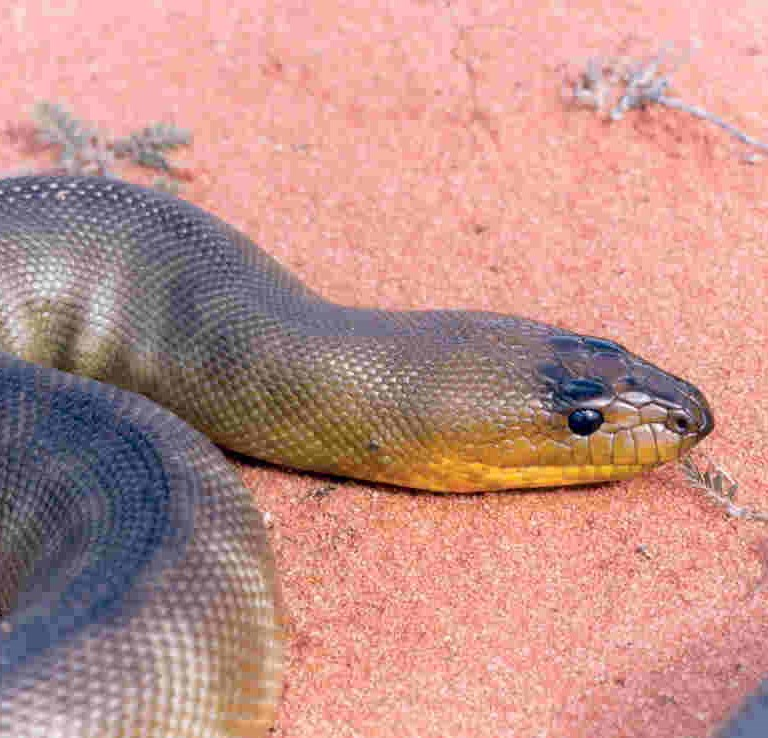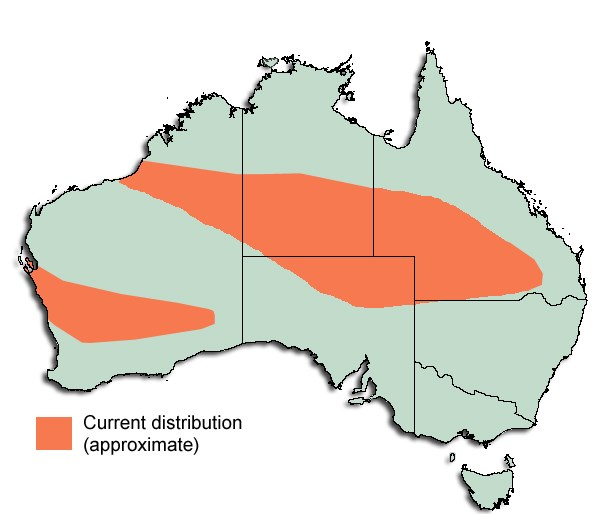Woma python
Woma python
Aspidites ramsayi
Description

| Length to 2.7m |
Av. length 1.5m |
Av. weight 550 grams |
The woma python’s grey, olive, or brown back is ringed with darker bands; and its belly is cream to yellow. Unlike most other Australian pythons, it has a narrow pointed head that is not distinct from its body. This leads to woma pythons being mistaken for venomous snakes. Womas also lack the heat sensors of other pythons.
Diet and habitat

Woma pythons shelter during the day in hollow logs or in burrows dug by bilbies and feral rabbits. They also use their heads to enlarge burrows. The only other Australian snake known to dig is the black-headed python. These harmless snakes specialise in eating other reptiles, including lizards and other snakes, although they also eat mammals and birds.
Breeding

| No. eggs 5-19 |
Incubation 2 months |
Lifespan 20+ years |
The male uses small spurs at the base of his tail to stimulate the female during mating. After laying a clutch of eggs in September-October, the female coils around the clutch and may shiver, using muscular activity to generate heat. Woma pythons are independent after hatching.
Distribution

The woma lives in semi-arid and arid environments in central and south-west Australia. In south-western WA, the number of womas declined significantly after the 1950s and there have been few confirmed sightings outside Shark Bay since the 1980s.
Status
Loss of habitat due to land clearing is the greatest threat to the woma python, although foxes and feral cats also have an impact. Project Eden’s feral animal control programs have helped the woma python make a comeback in Shark Bay and the main cause of mortality of radio-tracked womas on Peron Peninsula has been vehicles running over them on the Denham-Monkey Mia road.
Fact sheet
SHARK BAY
World Heritage


